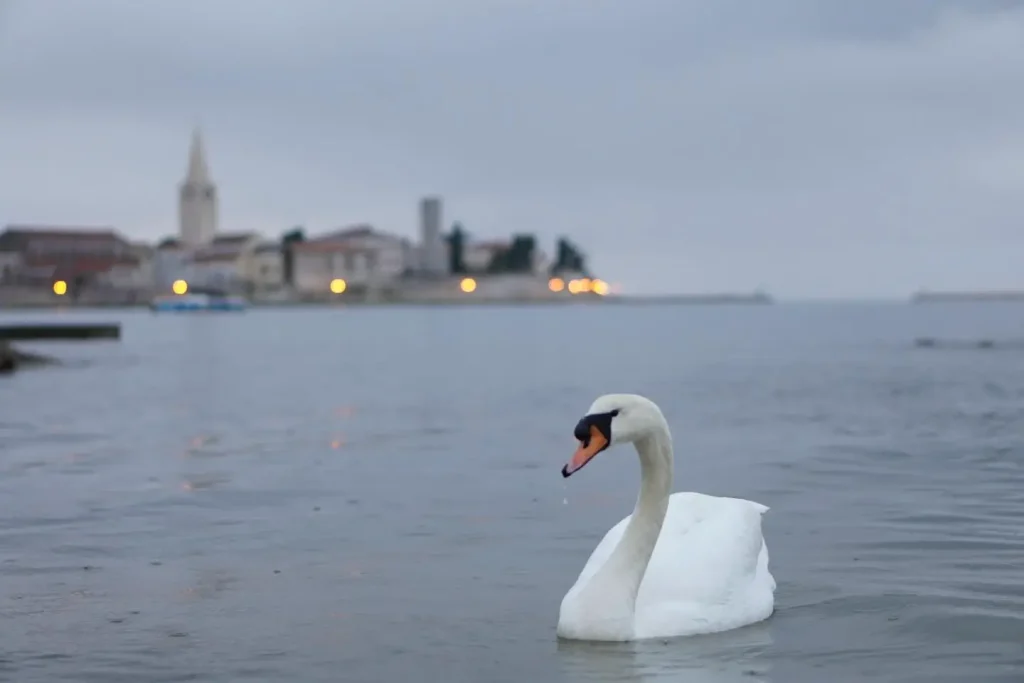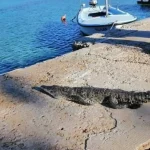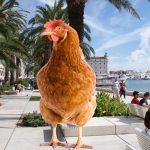Written by: dr.sc. Barbara Sladonja, dr.sc. Danijela Poljuha, and mag.oecol. Mirela Uzelac.
Faithful couples
This pair of swans belong to the species of red-billed swans (lat. Cygnus olor). In English, they are called “mute swans” or silent swans because they are the quietest of all swan species.
The mute swan is one of the largest birds that can fly. They feed primarily on underwater vegetation, grass, algae, and the like and sometimes eat smaller fish and insects. You can feed them with pieces of bread or cereals such as wheat or corn. They catch food by diving into the water with the front of the body and the neck outstretched while the body’s back protrudes into the air. They eat up to 3-4 kilograms of food a day!
They usually live in pairs their whole lives. Because of their faithful love and their necks that they can bend in the shape of a heart, they have become a symbol of love and fidelity, and an inspiration for many art and literature works.
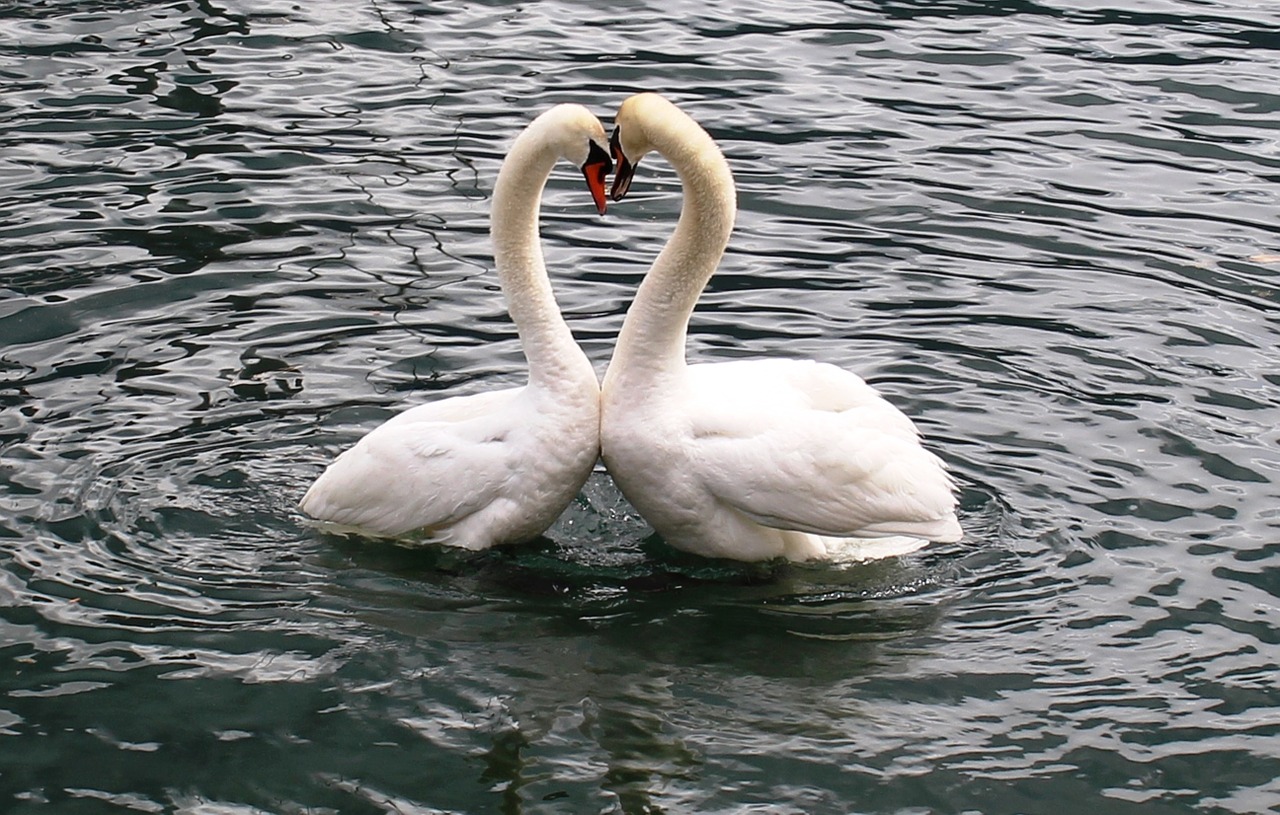
Pixabay
Where did they come from and why?
Swans are migratory birds, which means that they migrate from the nesting area (northern areas) to the wintering area (southern areas) and back every autumn. They fly in a flock. Sometimes, due to fatigue, the couples stand out and decide to spend the winter on the shores of warmer seas. They fly at speeds of up to 90 km/h and cross 1000 km to the nesting site.
Swans are spread in almost whole of Europe. Their number has increased in the last 50 years, and their area of residence and nesting has expanded. From just an occasional winter resort, Croatia and the Mediterranean have become their year-round residence.
Therefore, they spend the winter in Croatia more and more often. Since the early ’90s, they have been nesting here. You can usually see them on inland lakes and in isolated places along the Adriatic coast. They inhabit areas of calm and slow freshwater, such as ponds, lakes, and swamps. You can also see them in brackish lagoons, salty bays, and on quiet shores. They are becoming more common in cities as well.
Our pair of swans chose Poreč because of the pleasant climate, beautiful city, and maybe the heart-shaped symbol on the Peškera Bay, which was a lure for our gorgeous tenants.
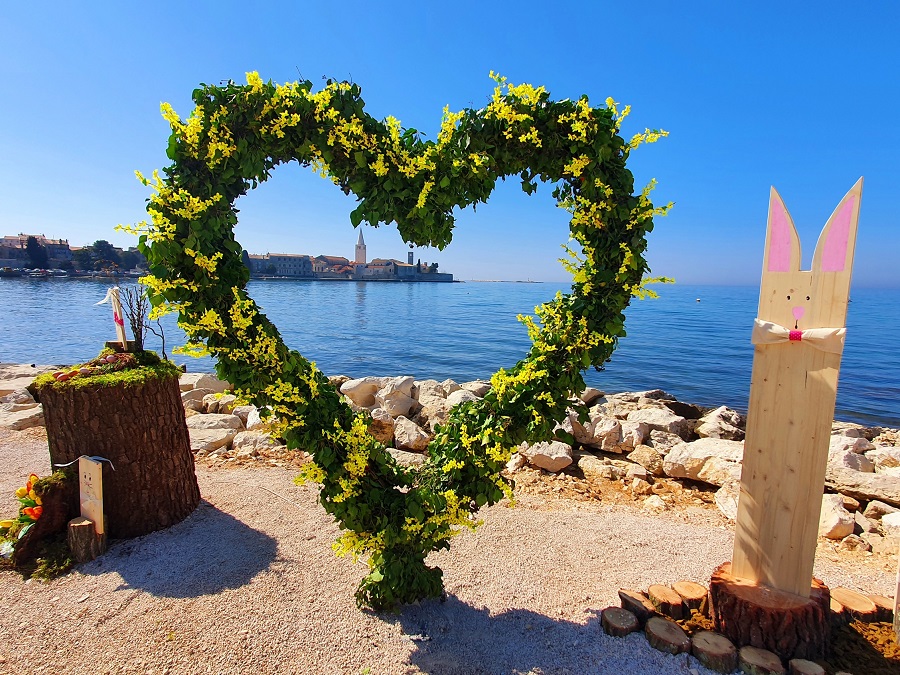
Easter decorations on the Peškera Bay in Poreč / The City of Poreč – Parenzo
Will they stay in Porec permanently?
Swans came to Poreč to spend the winter, and whether they will stay depends on whether they decide to nest here. If they choose to do so, the couple builds a nest together and keeps the birds. During that period, the male can be aggressive to protect the family. They nest from March to August near water, in shallow water, in aquatic habitats with reeds, cattail, or other aquatic vegetation, and sometimes in protected bays. There are not many such isolated habitats in Poreč, so they may decide to leave us, at least until next autumn.
And one more thing – although we are sure that we will all be hospitable and restrained towards them, let’s not forget that the mute swan is a protected species in Croatia. Therefore, any intentional harassment, nest damage, egg destruction, injury, and similar actions can be punished.
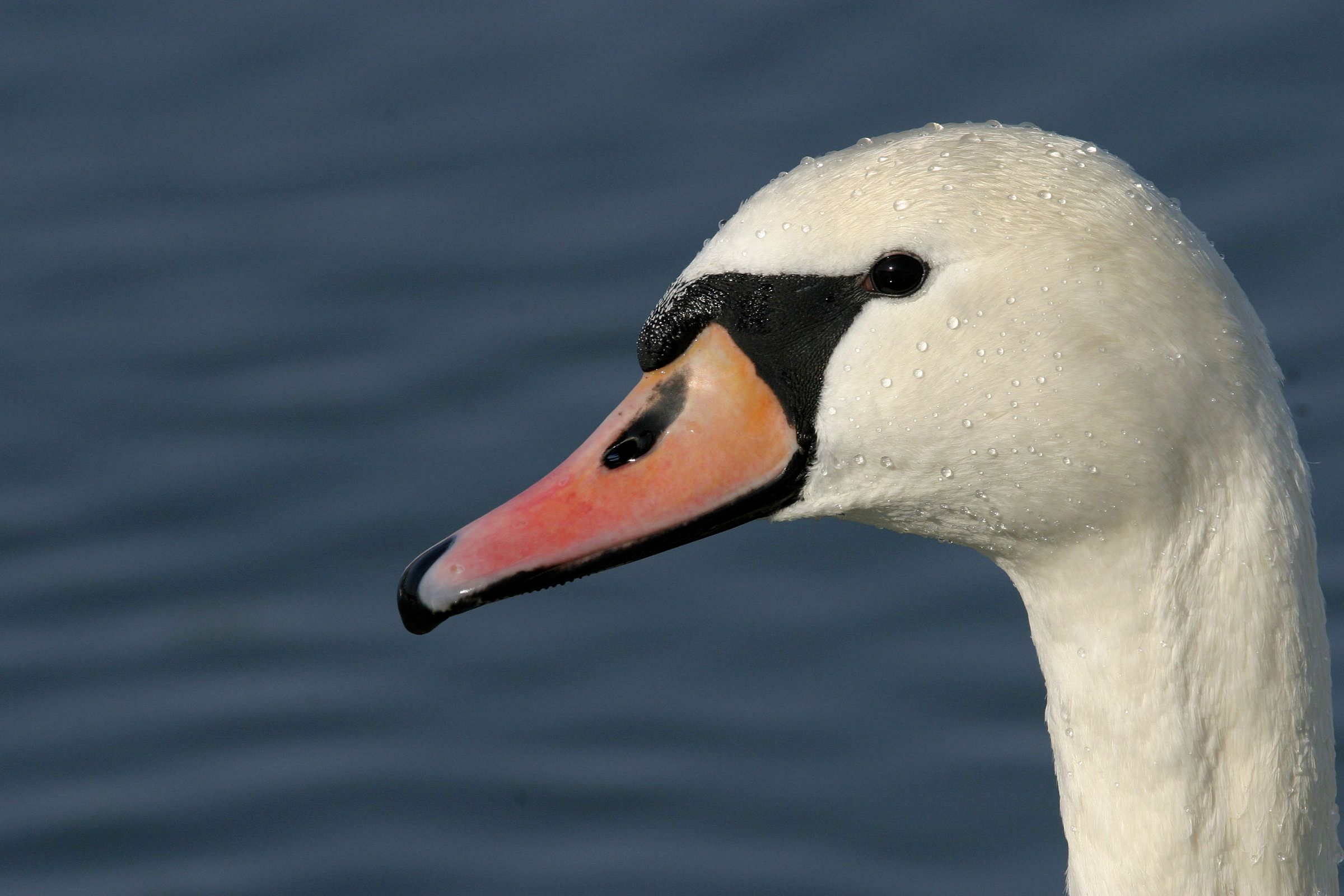
Romulić & Stojčić
Source: Poreč.hr
To read more about Poreč, check the Total Croatia article Poreč in a page.

